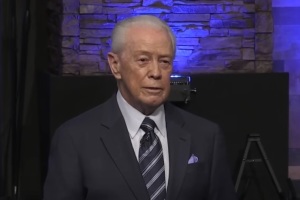The Tao of Narnia
Understanding 'Prince Caspian'
Many of us can hardly wait for the release of the second film in the Chronicles of Narnia series. Prince Caspian will arrive in theaters this Friday.
If you have read the book, or if you listened to Mark Earley yesterday on "BreakPoint," you know the storyline: the return of the four Pevensie children to a Narnia under the rule of the evil King Miraz. But how many of us realize the tale is undergirded by natural law lessons?
As Tim Mosteller writes in a book titled The Chronicles of Narnia and Philosophy, "There is a Tao of Narnia." Tao is the term that C. S. Lewis uses to describe "the doctrine of objective value, the belief that certain attitudes are really true, and others really false."
In other words, the Tao of Narnia is what theologians call natural law—the belief that moral truths are present in the natural world that can be known by all, which, in Narnia, includes dwarves, fauns, centaurs, and mice.
As Mosteller notes, Lewis does not argue for the Tao in his Narnia books; he illustrates it. Accepting the Tao involves three things: "(1) A commitment to an objective moral order that is independent of what I or anyone else thinks; (2) an openness to moral development only within the Tao, and (3) a willingness to follow the Tao in all situations."
The characters in Prince Caspian illustrate various responses to the Tao. For example, the valiant mouse Reepicheep wholeheartedly accepts the Tao and strives to live by it—even at the loss of his tail.
By contrast, King Miraz denies that loyalty to his nephew Caspian, the true king of Narnia, is a valid moral demand. Yet, he demands unswerving loyalty from his own men. In other words, Miraz tries to pick and choose which elements of the Tao he wants to live by. But as Mosteller notes, this is impossible because "all parts of the Law rest on the same self-evident moral axioms; any moral values the picker-and-chooser may appeal to have no authority outside the Tao as a whole."
We also have the dwarf Nikabrik, who wants to conjure up the White Witch for help in overturning Miraz. Nikabrik is the ultimate pragmatist: To him, moral truth is whatever works. As Mosteller observes, Nikabrik fails to realize that the Tao is not just one morality among many: "It is the only morality—Aslan's Owner's Manual for true success and fulfillment, for Humans and Talking Beasts alike."
These days—as in Lewis's time—schools routinely teach that there is no objective moral truth: Morality is subjective, a matter of just personal preferences. And then they wonder why kids lie, cheat, and steal. As Lewis himself observed, "We make men without chests and expect of them virtue . . . We laugh at honour and are shocked to find traitors in our midst."
Stories like Prince Caspian reveal, in the most exciting and dramatic way, that there is an objective moral law known to, and binding upon, us all.
Which is why I hope that, come this weekend, you will take in a showing of Prince Caspian. Take a child with you. Both of you will emerge from the darkened theatre longing to be as brave as Reepicheep—and as noble as the Lion.
_________________________________________________
From BreakPoint®, May 14, 2008, Copyright 2008, Prison Fellowship Ministries. Reprinted with the permission of Prison Fellowship Ministries. All rights reserved. May not be reproduced or distributed without the express written permission of Prison Fellowship Ministries. "BreakPoint®" and "Prison Fellowship Ministries®" are registered trademarks of Prison Fellowship




























